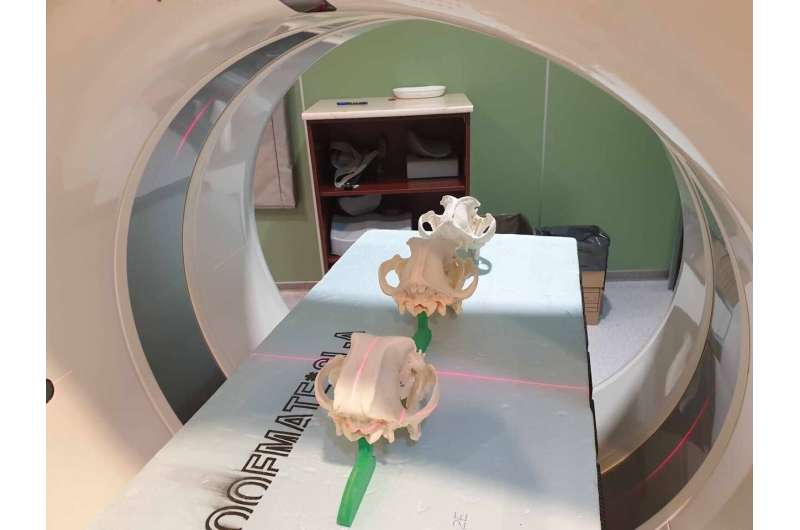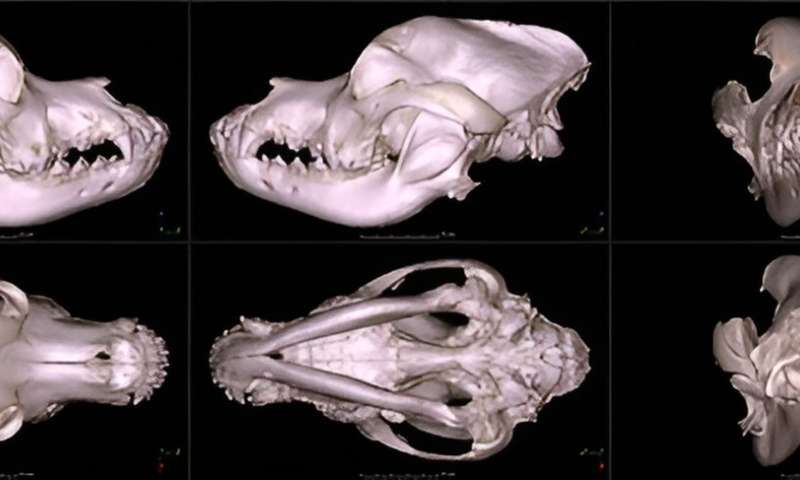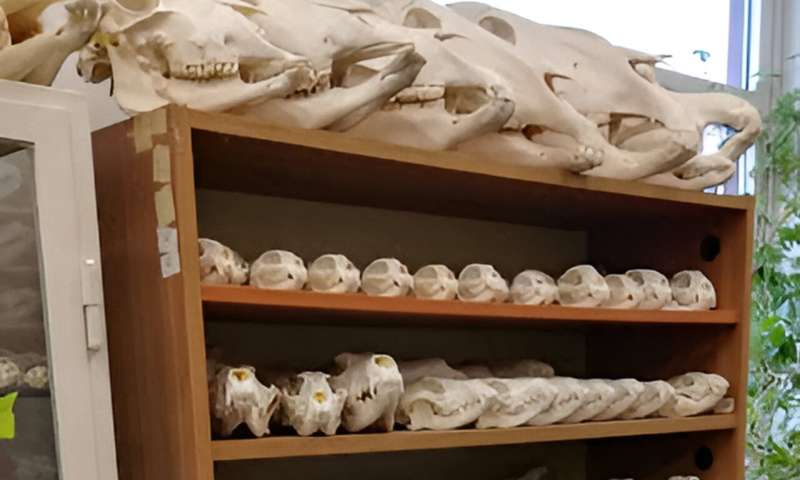Animal researchers develop digital dog and cat skull database

The ELTE E枚tv枚s Lor谩nd University is home to the skulls of more than 150 dog breeds and other animals. To make this unique collection accessible to all, researchers digitized the skulls of 431 dogs, cats and wild relatives. The database can be used for educational and research purposes.
The database was in the journal Scientific Data.
Tibor Cs枚rg艖, a researcher at ELTE, has been collecting animal skulls for decades to teach anatomy to biologists. The shape of the skull varies considerably between species and breeds, especially in dogs, where greyhounds have long skulls and the now popular French bulldogs have rounded skulls, for example.
A skull biobank could be a valuable resource for education, medicine and evolutionary research.
For example, Zsolt L谩szl贸 Garamszegi, Director of the HUN-REN Institute of Ecological Research, together with ethologists from ELTE and Niclas Kolm from Stockholm University, have based their findings in part on this collection, which shows that modern dog breeds bred in the last 200 years have larger brains than those with ancient origin, due to altered selection effects. The researchers wanted to make this unique collection of skulls available to all.
Similar research previously required researchers to visit collections in person. Today, however, it is possible to digitize skulls so that anyone can conduct studies at their desk, even on another continent.
The digitization was carried out by K谩lm谩n Czeibert, a veterinary neuroanatomist in collaboration with 脕d谩m Cs贸ka, Tam谩s Donk贸 and 脰rs Petneh谩zy, imaging specialists from the Medicopus Nonprofit Ltd. research unit, using a medical high-resolution computed tomography (CT) scanner.
-

Skull of a Saint Bernard dog from different views. First row: right, left, and front views. Second row: top, bottom, and back views. Credit: K谩lm谩n Czeibert -

The ELTE E枚tv枚s Lor谩nd University is home to the skulls of more than 150 dog breeds and other animals. Credit: Tibor CSorgo, Eniko Kubinyi
In total, 431 skulls were digitized, representing 152 dog breeds, 9 cat breeds and 12 of their wild relatives, including wolves, jackals, coyotes, a leopard and a serval.
According to the study's corresponding author, Enik艖 Kubinyi, head of the MTA-ELTE Lend眉let Companion Animal and ELTE NAP Canine Brain research groups, "The digital skull database can be used for comparative anatomical and evolutionary studies, in the education of veterinarians and biologists, and even for the development of machine learning algorithms for automated species identification and veterinary diagnostics."
More information: K. Czeibert et al, High-resolution computed tomographic (HRCT) image series from 413 canid and 18 felid skulls. Scientific Data, Scientific Data (2024).
Journal information: Scientific Data
Provided by E枚tv枚s Lor谩nd University




















